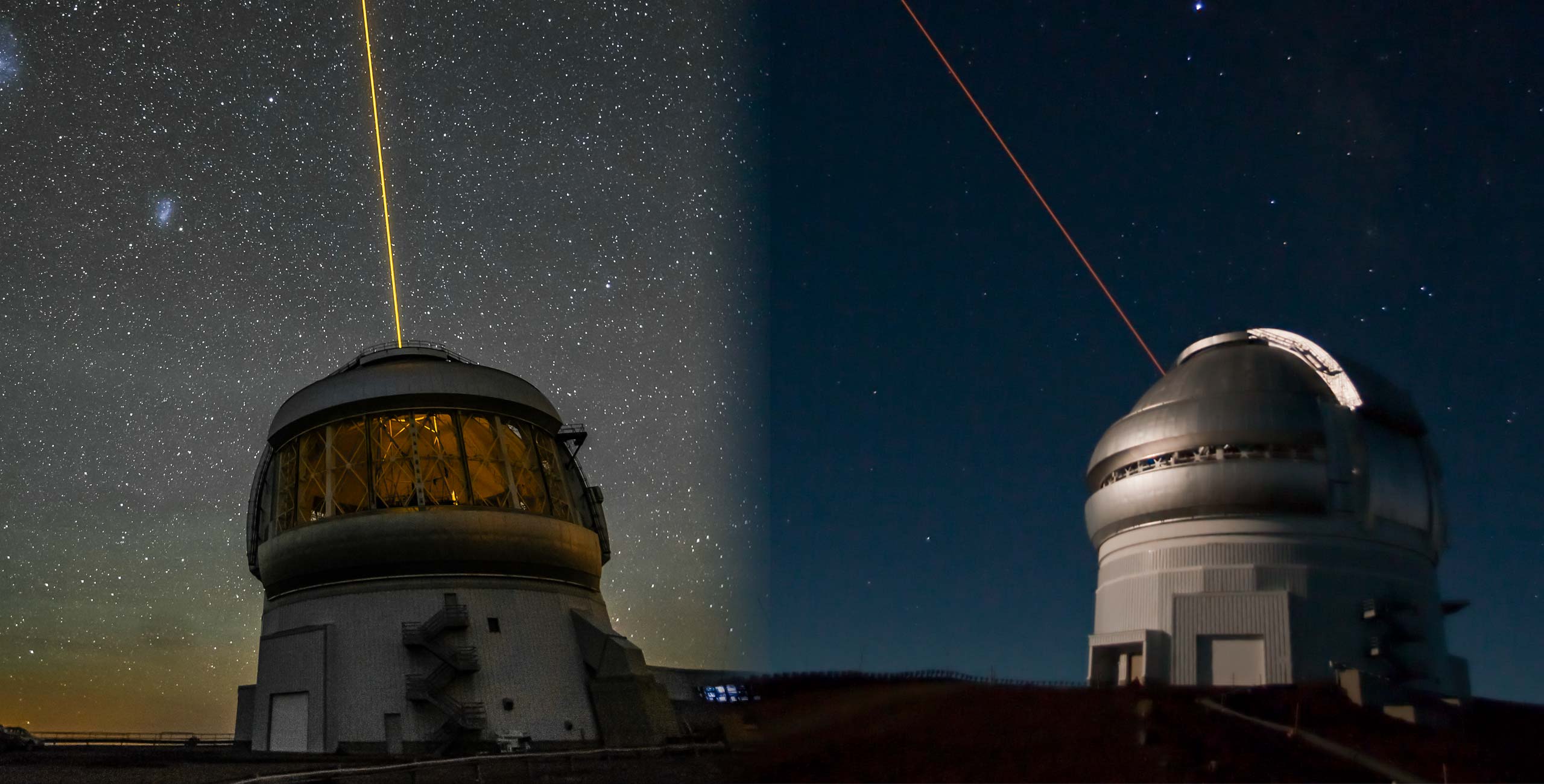Gemini South on the summit of Cerro Pachón in Chile (left) and Gemini North on the summit of Maunakea in Hawai’i (right). Image credit: International Gemini Observatory/NSF NOIRLab/NSF/AURA
The International Gemini Observatory consists of twin 8.1-meter diameter optical/infrared telescopes located on two of the best observing sites on the planet.
From their locations on mountains in Hawai’i and Chile, the International Gemini Observatory’s telescopes can collectively access the entire sky. Gemini’s suite of capabilities includes a wide-field laser adaptive optics system that complements current space-based telescopes and the Vera C. Rubin Observatory, which is being constructed on Cerro Pachón near Gemini South (Rubin Observatory construction is managed by AURA). Gemini also hosts a robust visitor instrument program (unique among this telescope class). Gemini pioneers innovative approaches to proposing and observing, including: Fast Turnaround (monthly deadlines); Bring-One, Get-One (encourages visits by young career professionals in astronomy research); Large and Long programs (multi-year research); and Priority Visitor mode.
The Gemini international partnership includes the United States, Canada, Chile, Brazil, Argentina and Korea. These Participants and the University of Hawai‘i, which has regular access to Gemini, each maintain a National Gemini Office to support their local users. Any astronomer in these countries can apply for Gemini time, which is allocated in proportion to each participant’s level of support.
The astronomical community is honored to have the opportunity to conduct astronomical research on Maunakea in Hawai‘i. We recognize and acknowledge the very significant cultural role and reverence that this site has to the Native Hawaiian community.
The International Gemini Observatory is a Program of NSF NOIRLab, which is managed by the Association of Universities for Research in Astronomy (AURA) under a cooperative agreement with the U.S. National Science Foundation.


